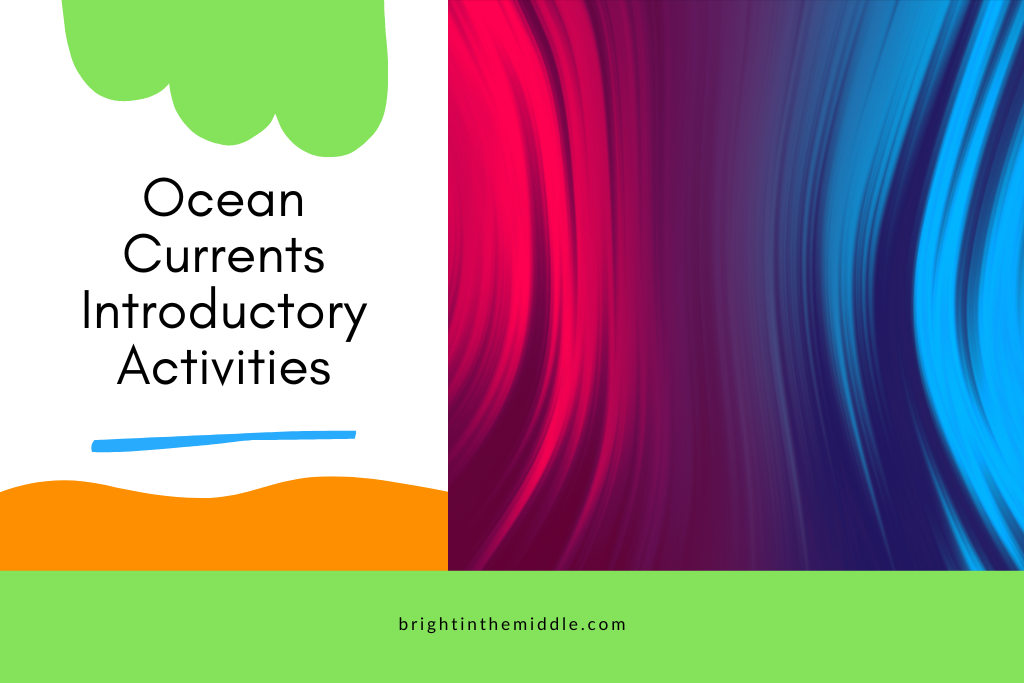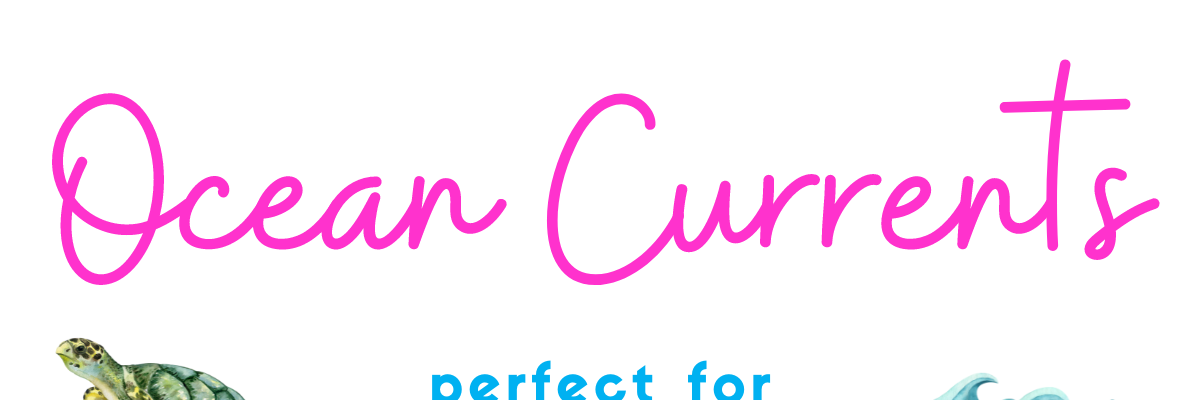Teaching your hydrosphere unit and looking for ocean currents activities? I got you! There are so many neat things that you can do that will bring the WOW Factor to your science classroom and get your students engaged in learning!
In this post, I share ways to get your students to WONDER. This helps them become internally motivated to learn even more about ocean currents! Second, I share an interactive lesson that helps them to overcome the overwhelm of learning all the terms and concepts associated with this topic. Finally, I share different ways to WIDEN, or extend student knowledge, on this topic beyond what state standards may require.
Let’s dive into these ocean currents activities!

Ocean Currents Activities to Help Students WONDER
So, WONDER strategies are those that help your students WANT to learn. Once the motivation is there internally, the rest is a piece of cake. Your students are invested and are eager to learn more! Here are three activities you can try! You can choose to do one, or you can even do all three!
Ocean Currents Mystery Box
Have you ever used a mystery box in your classroom? It’s just a box filled with random items that relate to the lesson you are about to teach.
For a mystery box for ocean currents, here are some ideas you can put in there: rubber duck (represents the scientific studies prompted when a whole lot of rubber ducks were dumped into the ocean), toy marine animals (represents marine life), toy boat (represents human transportation and shipping routes), sponge (represents the absorption of nutrients), plastic bottle (represents marine debris), key (oceans are a key influence), thermometer (represents the oceans impact on climate), etc.
You can choose to stand up in front of the class and take out one item at a time. You can have students guess what you are about to teach, or you can have them guess why each item relates to ocean currents.
Another option would be to create enough mystery boxes for groups of students to explore.
You can even have students brainstorm more items that could have been put into the box.
Mystery boxes can be a lot of fun!

Ocean Currents Model
Another activity you can do is to model ocean currents and teach why the water does what it does! How are ocean currents created?
The colder and saltier the ocean water is, the denser it is. When water is dense, it will sink and will be replaced by warmer, less salty water. This creates a circular pattern.
To create a simple demo for students, you can use everyday materials:
- glass casserole dish (like a 13 x 9)
- blue and red food coloring
- cold water
- warm water
- First, add the blue food coloring to the cold water. Don’t make it too dark, but make it blue enough to see.
- Pour the cold, blue water into the casserole dish.
- Add the red food coloring to the warm water.
- Gently pour the warm water onto the cold water. You can do this on the side of the dish. You want to pour it slowly to minimize the mixing.
- Observe what happens. You should see a visible boundary. Observe any currents or movement.
This is an easy enough demo that students can do this in groups on their own. They will be able to observe things more closely!
Don’t have time for this and just want your students to watch video? Maybe you are just wanting to explore more. Check out these resources on modeling ocean currents. They range from simple to a little more complex.
Resources for Ocean Currents Model
Virtual Field Trip – Coral Reefs
Ocean currents play a huge role in coral reef ecosystems. Before diving to learn more about this topic, students can take a virtual field trip to coral reefs. Many students may have never heard of them!
You can briefly explain what ocean currents are and let students know that ocean currents have an effect on many things, including coral reefs.
You can have them watch this Great Barrier Reef Coral Reef Virtual Field Trip Video or have them check out these 360 Coral Reefs Virtual Tours. The 360 tours would be great with VR goggles if you have them in your school!
So much fun!
Ocean Currents Interactive Lesson
Time to dive into the ocean current explanation. Interactive lessons are great for teaching (flipped classrooms, direct instruction, virtual learning, etc.). They are also great for review! Interactive lessons are designed to introduce students to scientific concepts and vocabulary without overwhelming them.
They help reduce student cognitive load by giving students one piece of information at a time and giving them time to process the information with embedded questions. If students learn too much information at a time, they end up not learning anything at all. Interactive lessons help to avoid this.

This is such a fun topic to teach! This ocean currents interactive lesson is no exception! Ocean currents are so essential and influence so many things! In this lesson, students will learn all about surface currents and deep ocean currents, the Coriolis effect, gyres, density impact on ocean currents, ocean current examples, upwelling, and more!
The embedded activities include an anticipation guide, four corners vocabulary, drag-and-drop activities, and more!
You can find this resource in the Bright in the Middle Shop.
You can also find it on TPT.
Ocean Currents WIDEN Activities
Have time to take learning beyond the lesson and extend student knowledge? Check these 3 ocean currents activities out!
Ocean Currents Research Project
Assign students a major ocean current to explore. Students can work individually, in pairs, or in groups. Whatever fits best for your classroom!
Students can take their assignment currents and explore exactly how it influences weather and climate, life, and other things.
Students can look for:
- characteristics of the ocean current
- how the current forms
- impact on climate and weather
- influence on life forms
- human interaction
- if there is any historical significance
- and more!
You and your students can best choose how you want them to share their findings. They can make poster, a slide presentation, a brochure, and any other format!
Plastic Pollution Brochure
Speaking of brochures, students can create a brochure (PSA) to explain the consequences of all of the plastic in the ocean.
Students can research to learn about plastic pollution in the ocean and how ocean currents come into play spreading this plastic.
Ocean Pollution Resources
A Guide to Plastic in the Ocean
Students can get creative!
Marine Energy STEM Project
Want a fun STEM project to go with this topic? This a fun, real-life application! Did you know that scientists are working on renewable energy options using the power of the ocean?
Students can use everyday materials to design a tool that could be used in the ocean to generate power! They can also look up tools that have already been created and figure out ways to improve them!
Bonus: Go With the Flow Game
Want something short and sweet to widen your students’ knowledge on ocean currents? Check out this game! Ocean currents explained with fun!
The goal of this game is to fix the currents using salt and heat to move the submarine to where you want it to go. The ultimate goal is to get the key to the treasure chest! This a wonderful way to reinforce how temperature and salt content drive ocean currents!
What middle school student doesn’t love to play a game?
Which of these ocean currents activities will you choose for your lesson plans?
Help your students master science content!



[…] Ocean Currents […]